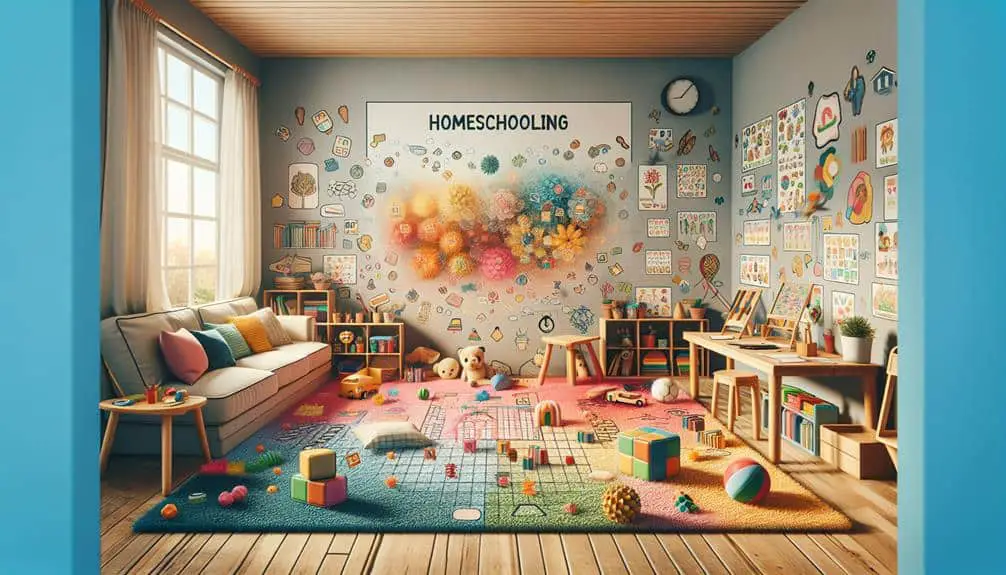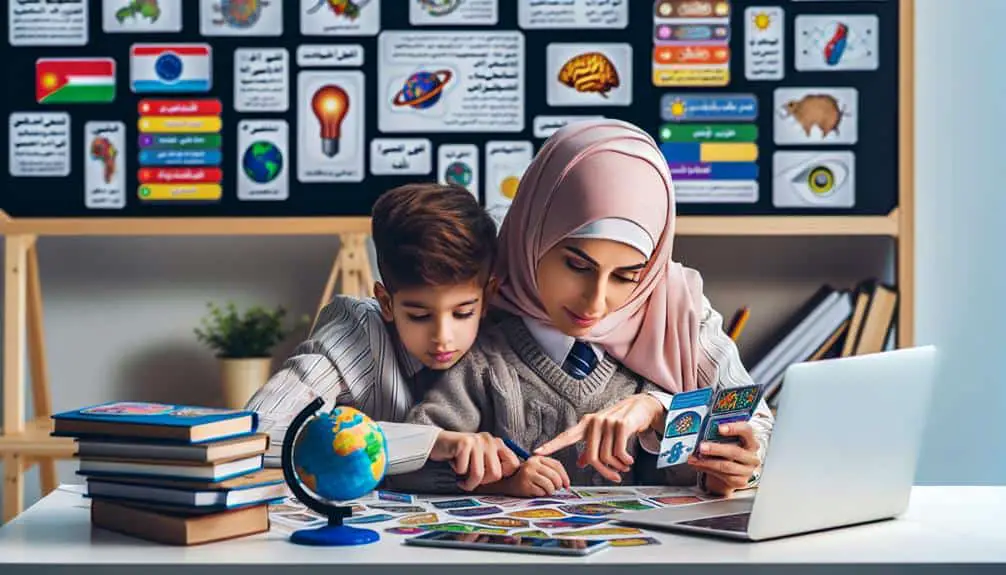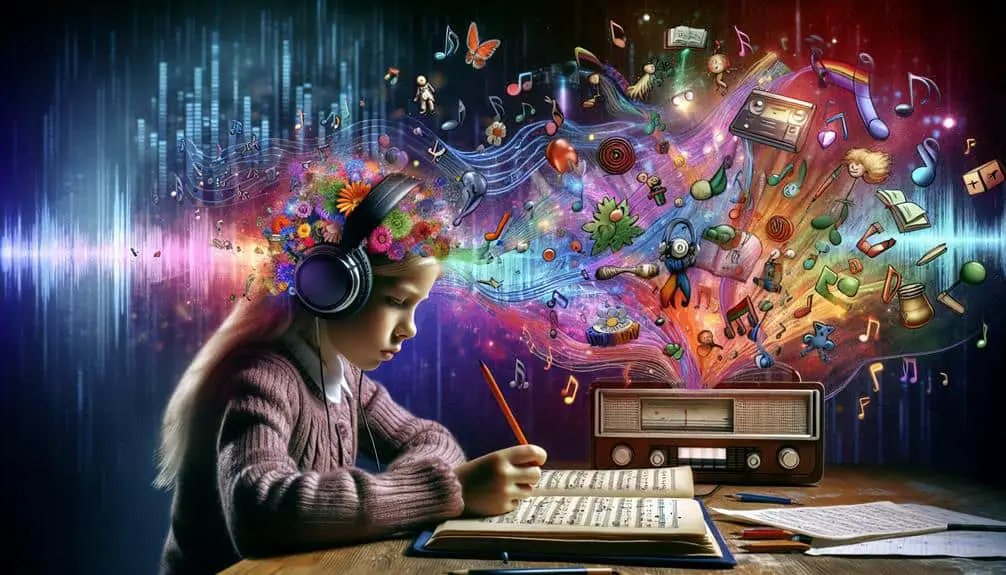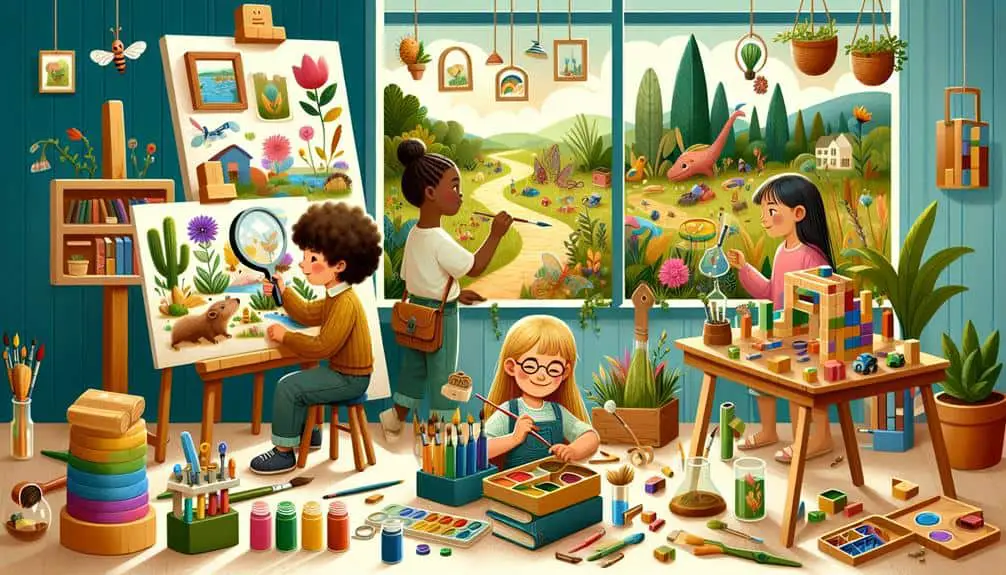Enhance your homeschool environment with auditory, kinesthetic, and visual elements for better learning. Tailor activities for each style—lectures for auditory learners and experiments for kinesthetic ones. Visual aids like interactive screens aid understanding and retention. Quiet spots with calming lighting foster concentration. Use varied senses for engaging teaching—multisensory approaches boost brain activity. Want to dig deeper into optimizing sensory learning at home? Keep exploring the strategies outlined for a richer homeschool experience.
Key Points
- Incorporate auditory elements like podcasts and verbal instructions.
- Utilize colorful visuals and interactive screens for visual stimuli.
- Engage in hands-on activities like experiments and role-playing.
- Create calm spaces with noise reduction and comfortable seating.
- Embrace multisensory teaching to stimulate different parts of the brain.
Understanding Different Learning Styles
Have you ever wondered how individuals perceive and process information differently when it comes to learning? Understanding different learning styles is essential in optimizing the homeschool environment for sensory learning.
Some individuals have auditory preferences, meaning they learn best through hearing information. These learners benefit from lectures, audiobooks, and discussions.
On the other hand, kinesthetic learners thrive when they can engage in hands-on activities. These individuals learn best through physical experiences, such as experiments, role-playing, and building models.
Research shows that catering to various learning styles can enhance comprehension and retention. For auditory learners, incorporating podcasts or verbal instructions into lessons can be beneficial. For kinesthetic learners, providing opportunities for interactive projects and movement-based activities can improve their understanding of concepts.
Incorporating Visual Stimuli in Lessons
How can incorporating visual stimuli in lessons enhance sensory learning experiences for homeschool students?
Colorful visuals, interactive screens, artistic displays, and multimedia resources play an essential role in engaging students and enhancing their understanding of various subjects. Research indicates that visual aids can greatly improve information retention and comprehension. By integrating colorful visuals into lessons, you can stimulate interest and create a more dynamic learning environment. Interactive screens and multimedia resources offer opportunities for hands-on exploration, making complex concepts more accessible and memorable.
Artistic displays can help students make connections between different topics and foster creativity. Visual stimuli cater to visual learners, allowing them to process information more effectively. When used thoughtfully, these tools can cater to a variety of learning styles, making lessons more inclusive and engaging for all students. Utilizing a combination of visual aids can enhance the overall learning experience, making lessons more interactive and stimulating.
Utilizing Hands-On Learning Activities
Utilizing hands-on learning activities in homeschool environments enhances student engagement and deepens understanding across various subjects. Tactile exploration through interactive experiments allows learners to physically interact with materials, fostering a deeper connection to the concepts being taught. For instance, conducting science experiments where students mix substances to observe chemical reactions provides a hands-on experience that solidifies their understanding of scientific principles.
Incorporating kinesthetic movement into lessons promotes active learning and helps students retain information better. Activities like building models, acting out historical events, or using manipulatives for math problems engage multiple senses, making the learning experience more dynamic and memorable. By involving students in sensory play, such as using sensory bins for counting exercises or creating art projects with different textures, educators can cater to different learning styles and enhance overall comprehension.
Creating Calm and Quiet Spaces
To optimize the homeschool environment for sensory learning, creating calm and quiet spaces is vital for fostering concentration and reducing distractions during educational activities. Noise reduction is essential in these spaces to promote a peaceful atmosphere. Consider utilizing soft materials like curtains or rugs to absorb sound or using sound machines to mask unwanted noises.
Designating specific areas as meditation corners can provide a retreat for children to unwind and refocus when feeling overwhelmed.
When setting up these spaces, explore different lighting options to create a soothing ambiance. Natural light is ideal, but adjustable artificial lighting can also be beneficial. Cozy nooks with comfortable seating arrangements can further enhance the tranquility of the environment.
Make sure that these spaces are free from clutter and distractions to promote a sense of peace and serenity conducive to learning.
Engaging All Senses in Teaching
Engage all senses in teaching to enhance learning experiences and promote sensory integration for homeschool students. Sensory exploration and multisensory teaching are vital elements in optimizing the homeschool environment for effective learning. By incorporating activities that involve multiple senses, you can create a more engaging and interactive educational experience for your child.
Research suggests that multisensory teaching can lead to better retention of information as it stimulates different parts of the brain simultaneously. For example, when teaching math, you can use physical objects for counting and visualization, auditory cues for memorizing multiplication tables, and kinesthetic activities for understanding geometric concepts. This approach not only caters to various learning styles but also deepens comprehension through sensory engagement.
Furthermore, sensory exploration allows children to make connections between abstract concepts and real-world experiences. For instance, conducting science experiments that involve touch, smell, sight, and even taste can help solidify scientific principles in a tangible way. By embracing multisensory teaching methods, you can create a dynamic learning environment that maximizes your child's educational journey.




